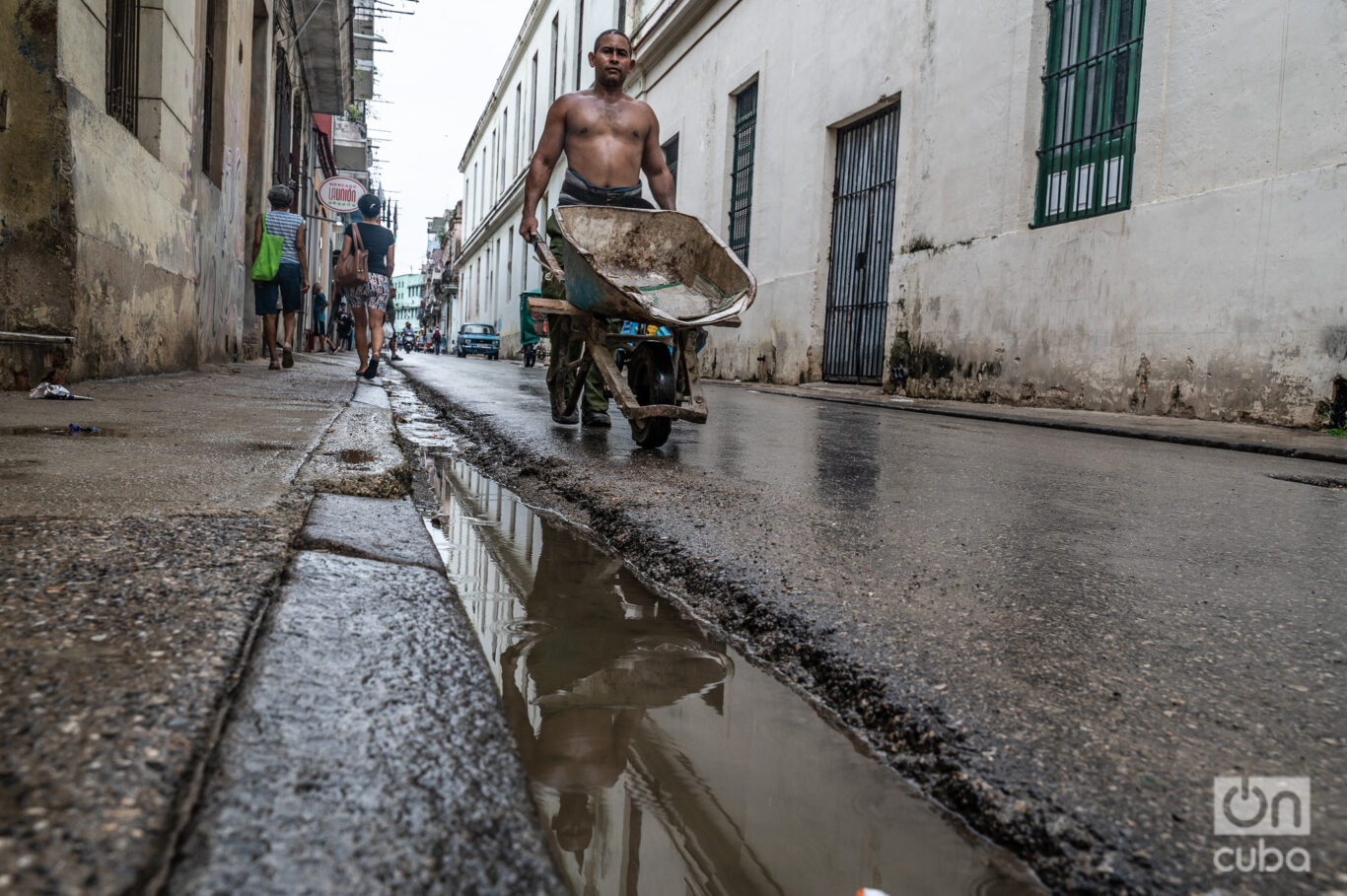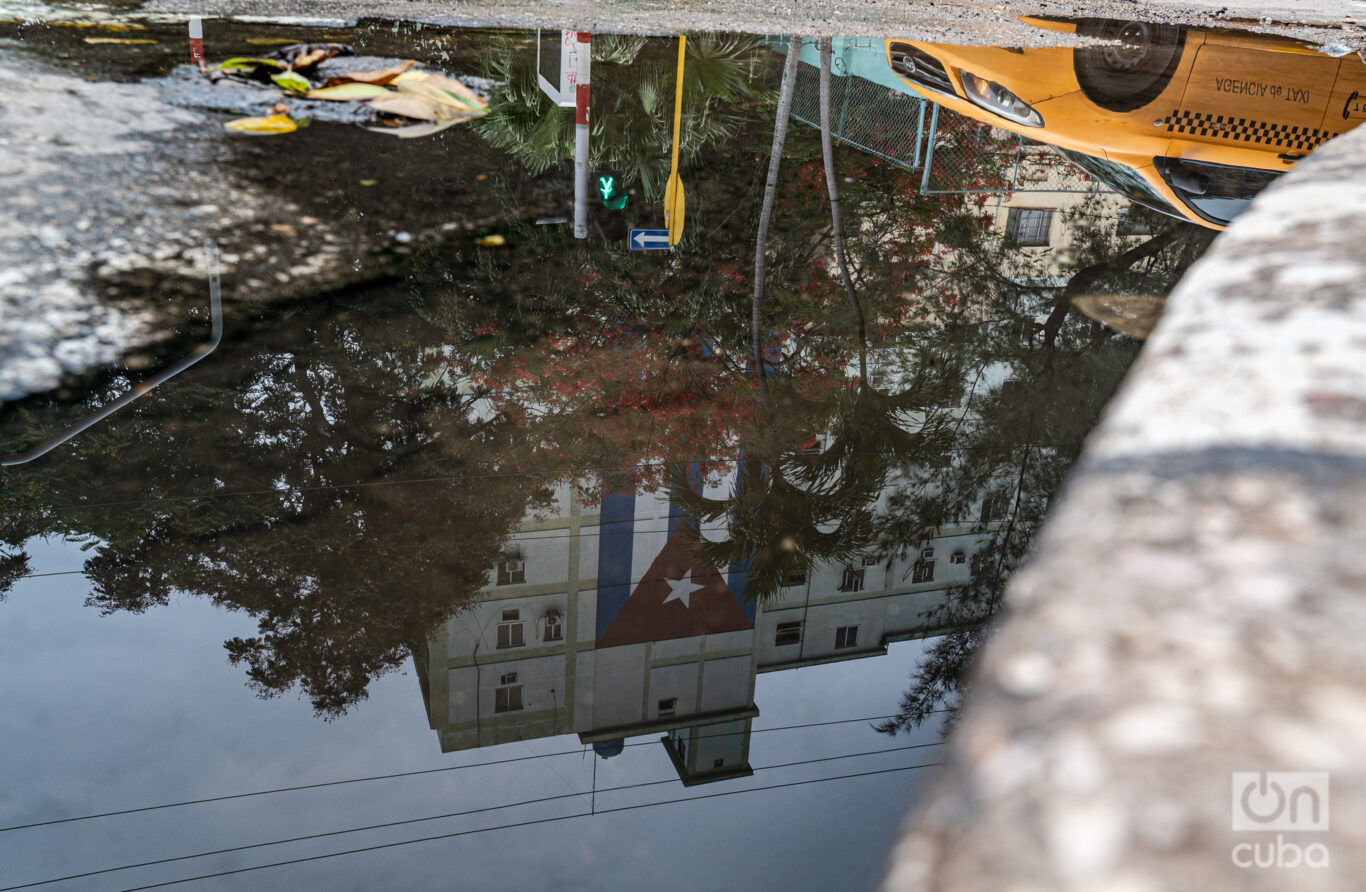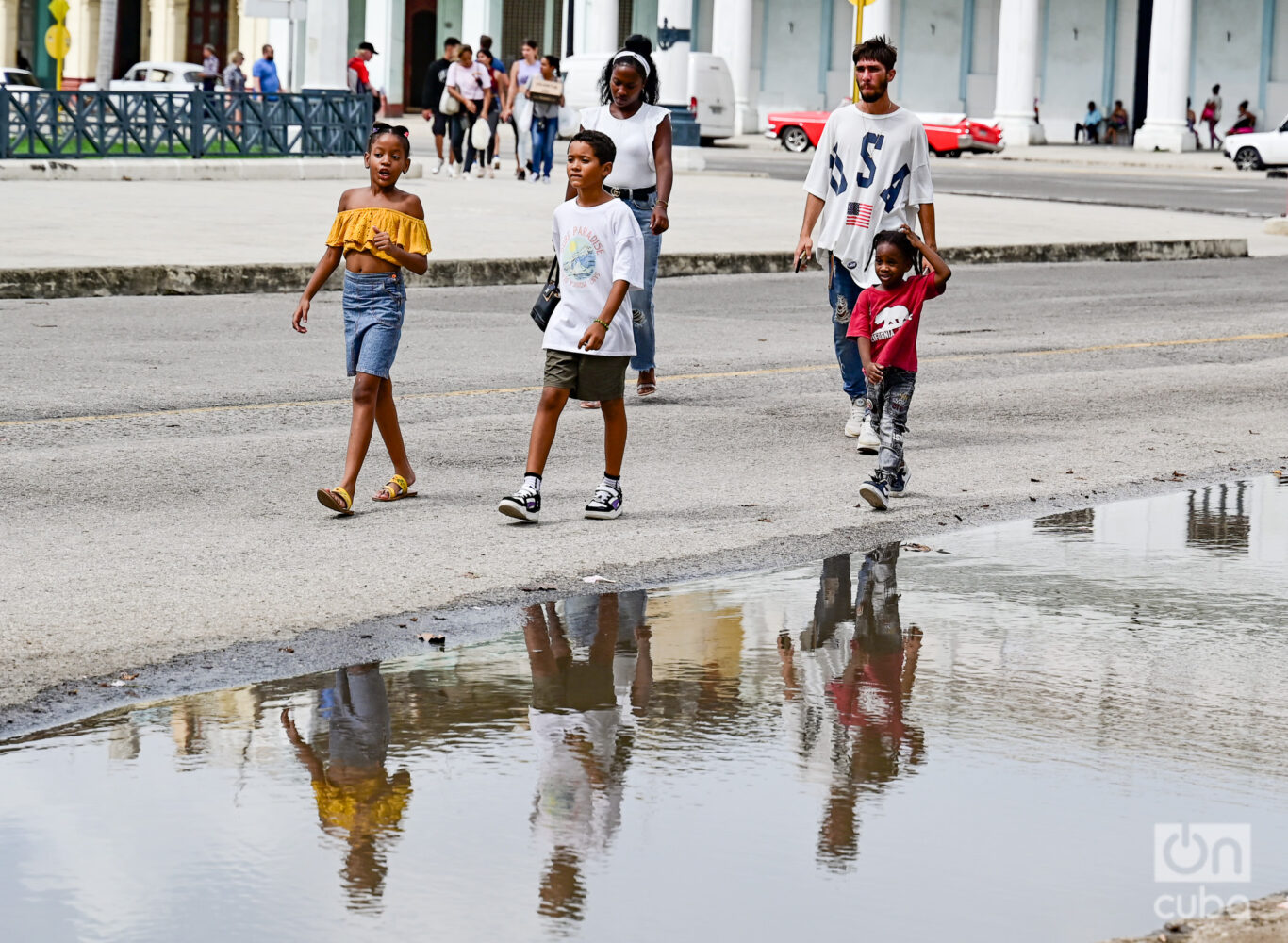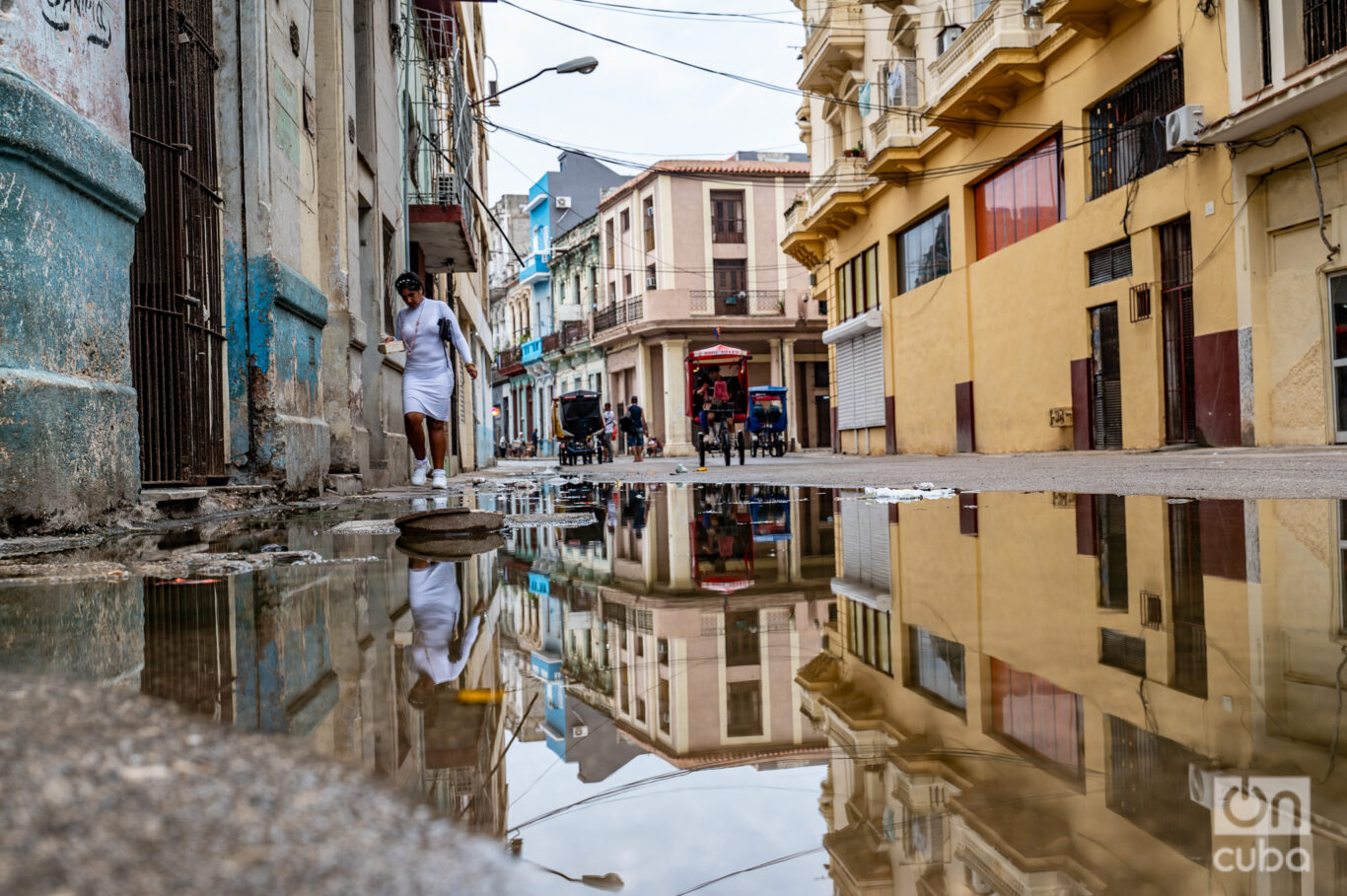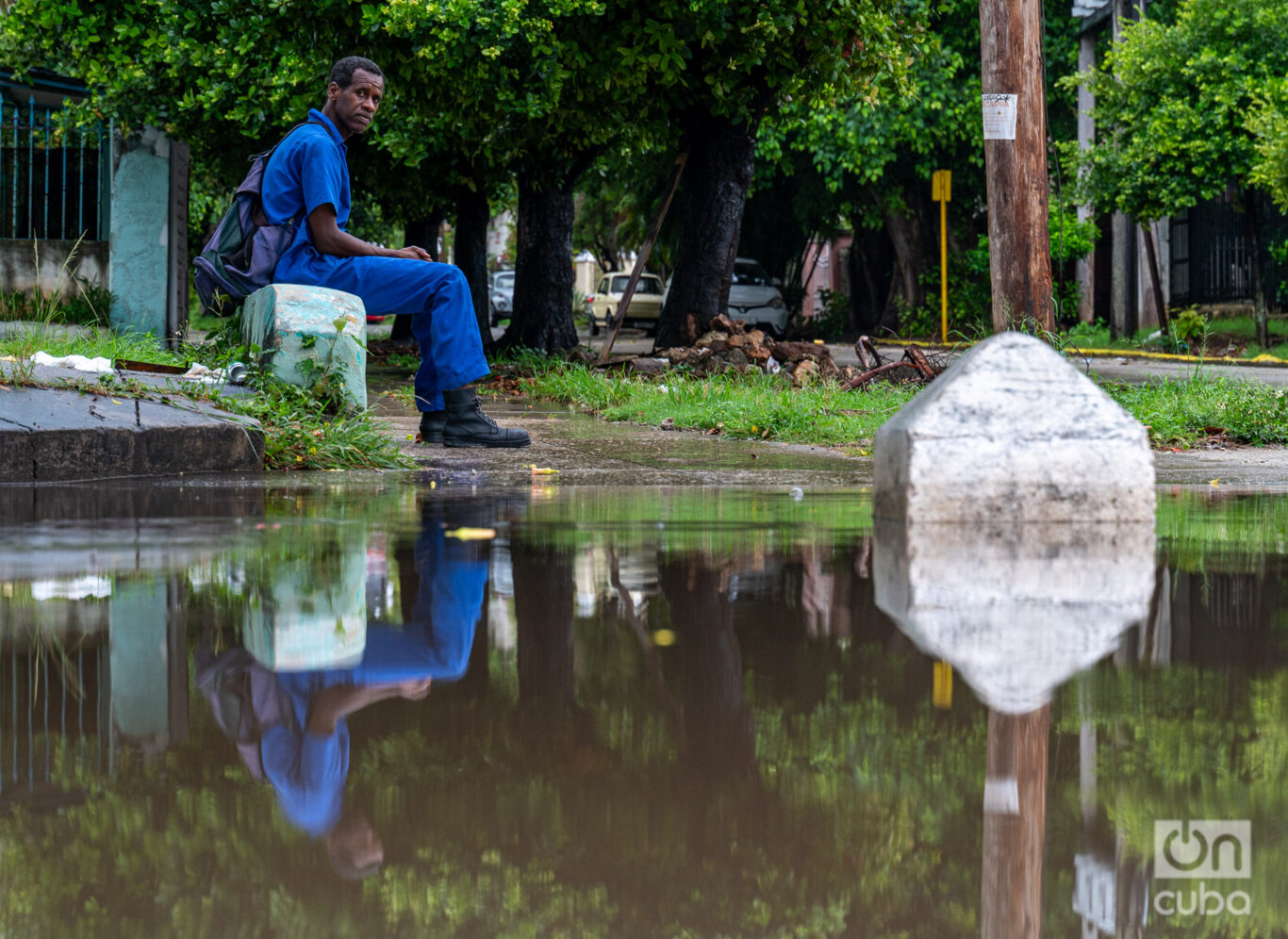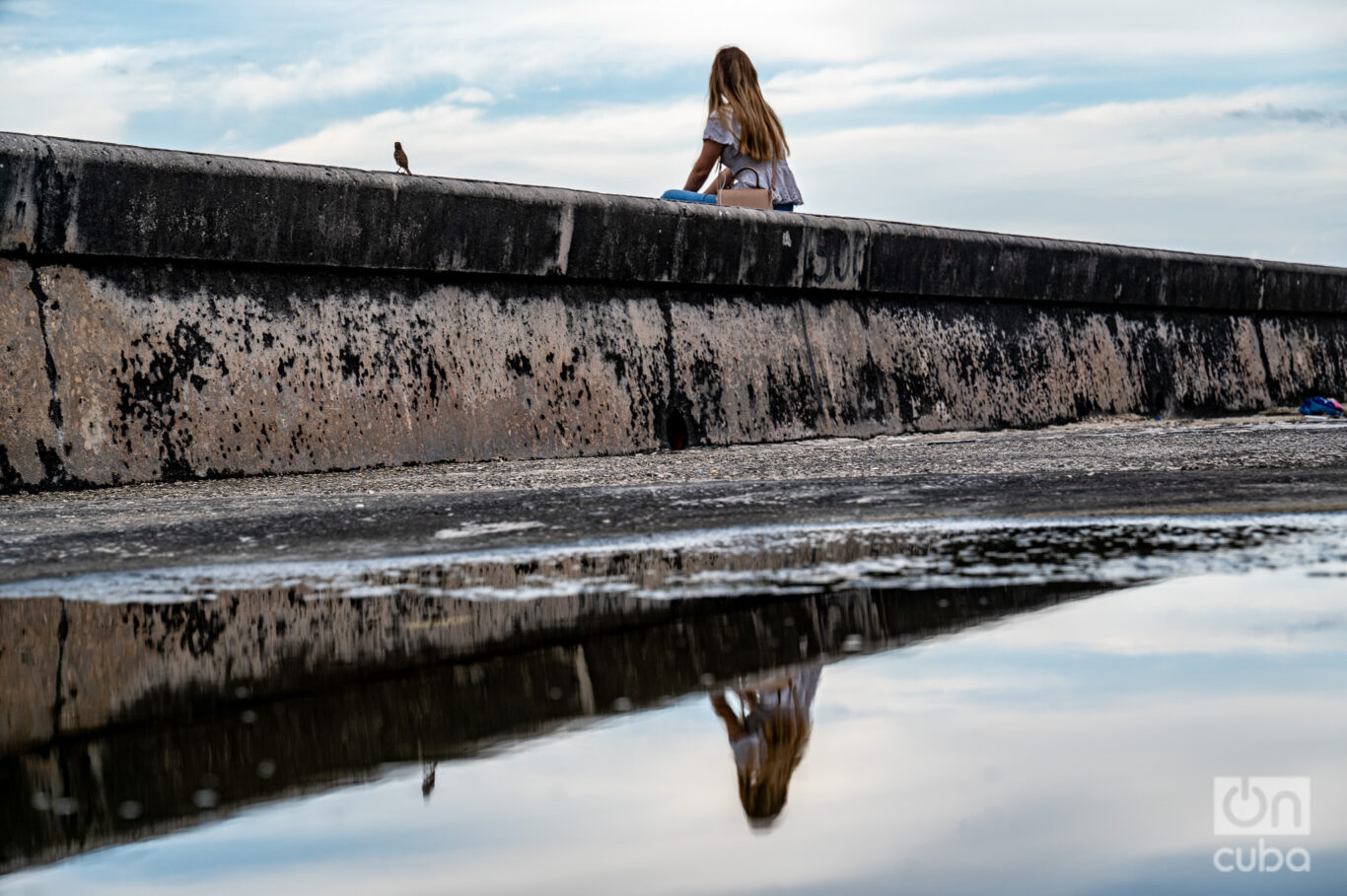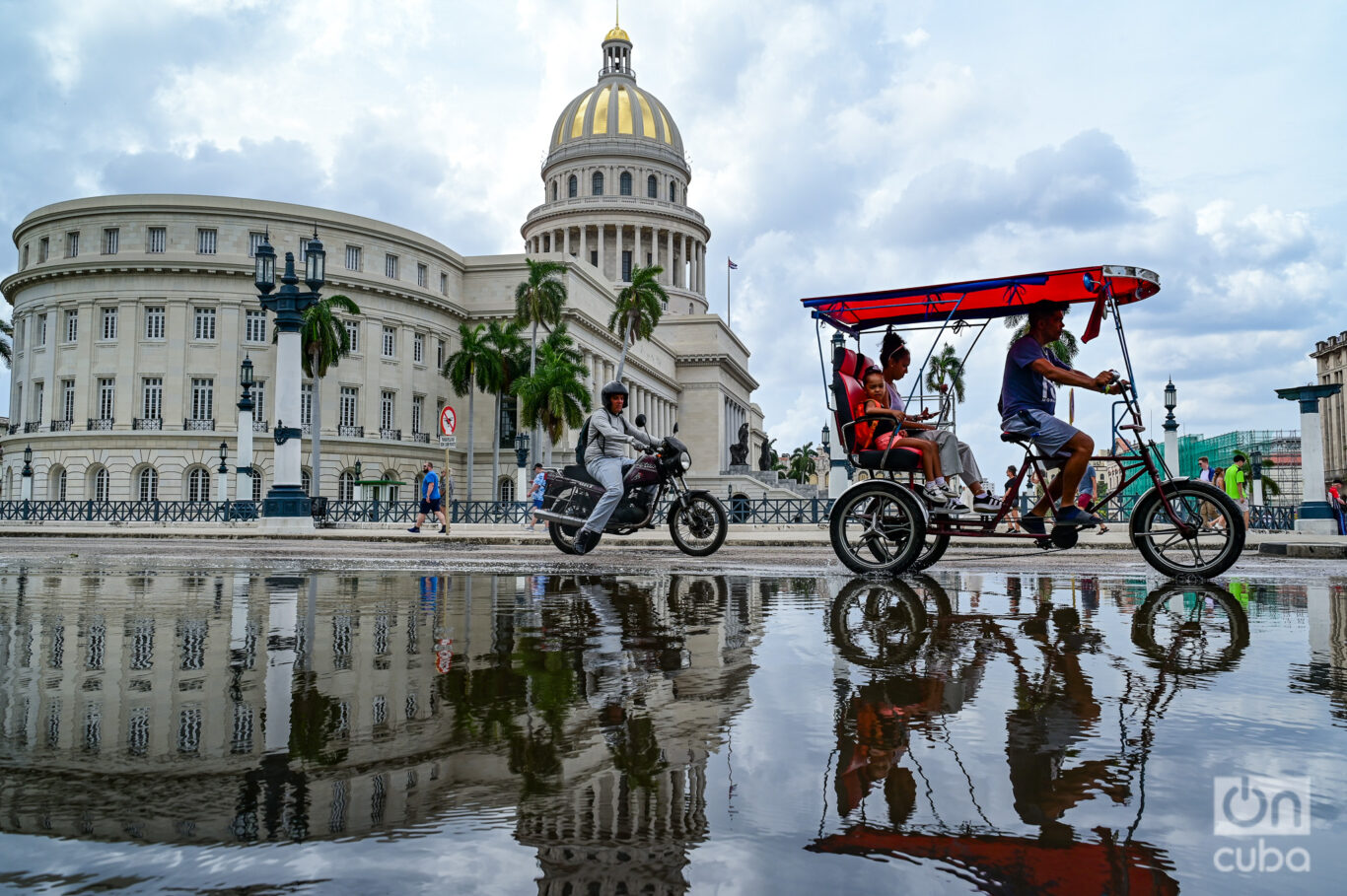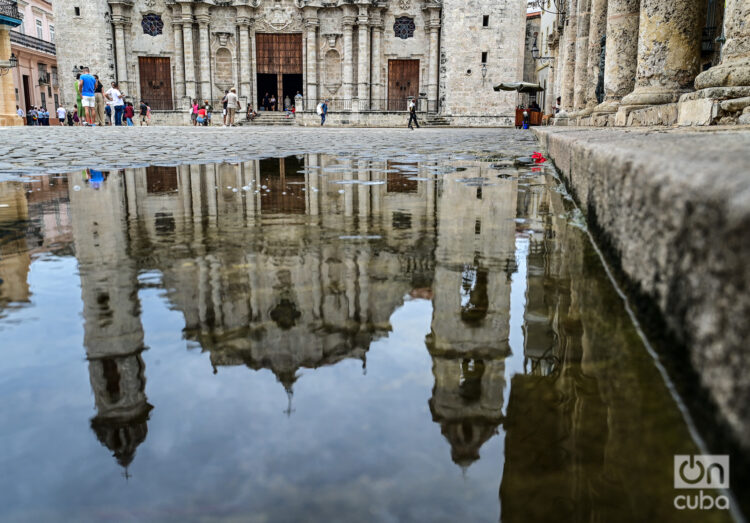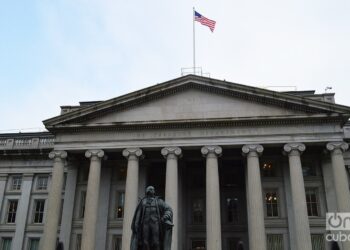The rain, upon touching the Havana soil, not only moistens it: it also reveals the open wounds in the pavement. Puddles appear like ephemeral mirrors on the streets; potholes full of water, the ruins of a city that breathes, pulsates and resists.
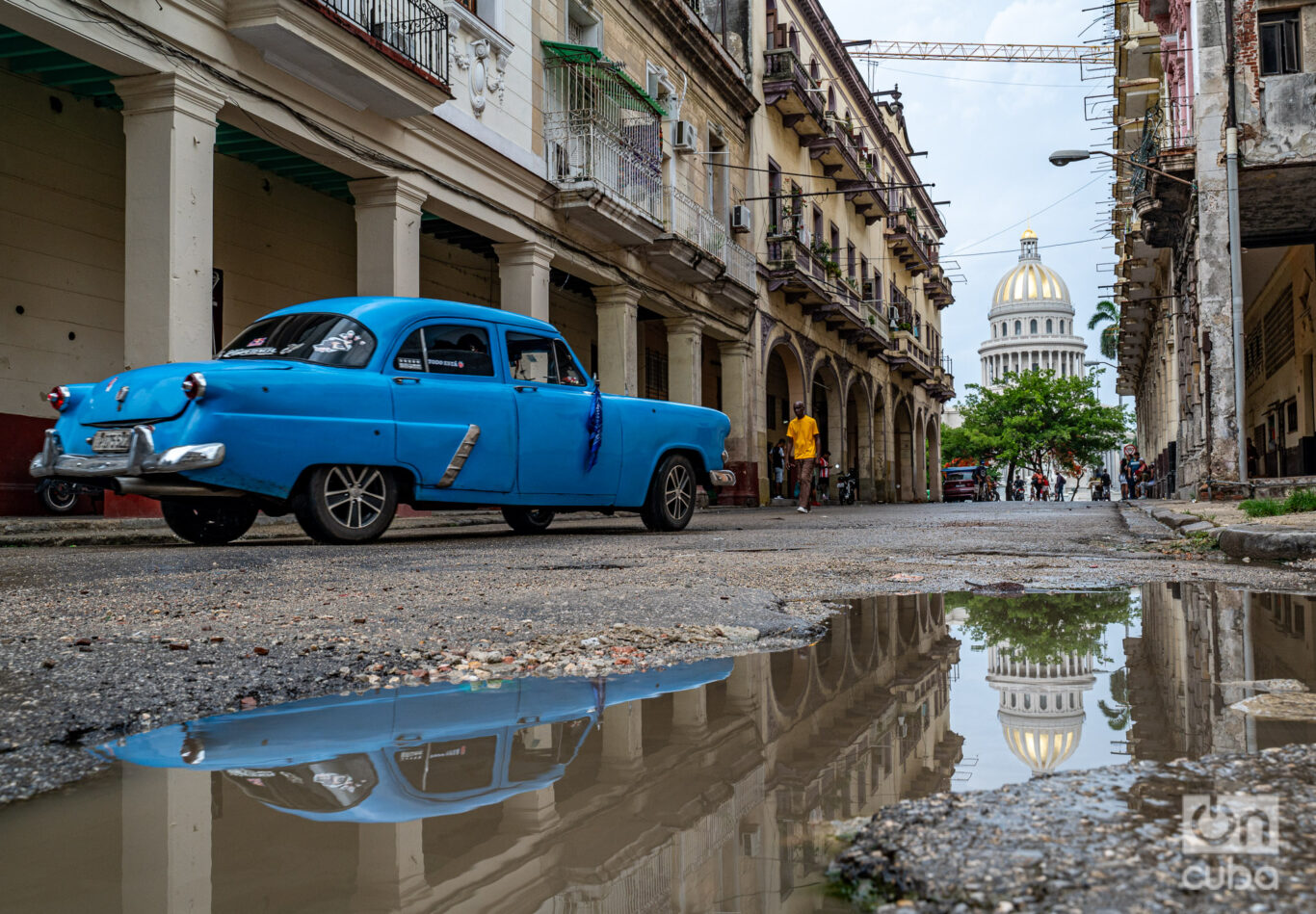
It doesn’t take a deluge for the streets to be flooded. With an inefficient drainage system, sometimes just a drizzle is enough for hundreds of potholes and corners to show, on a murky surface, fragments of the city. The urban landscape unfolds into an original and its liquid copy.

These puddles do not speak of children’s games or laughter, but of a hard daily life, of difficulties and contrasts. Walking among them I see how worn-out facades of faded colors unfold, like the work of an impressionist palette.
Passersby get around them as best they can. Some jump, others skirt them; others remain surrounded by them, waiting for something to happen.
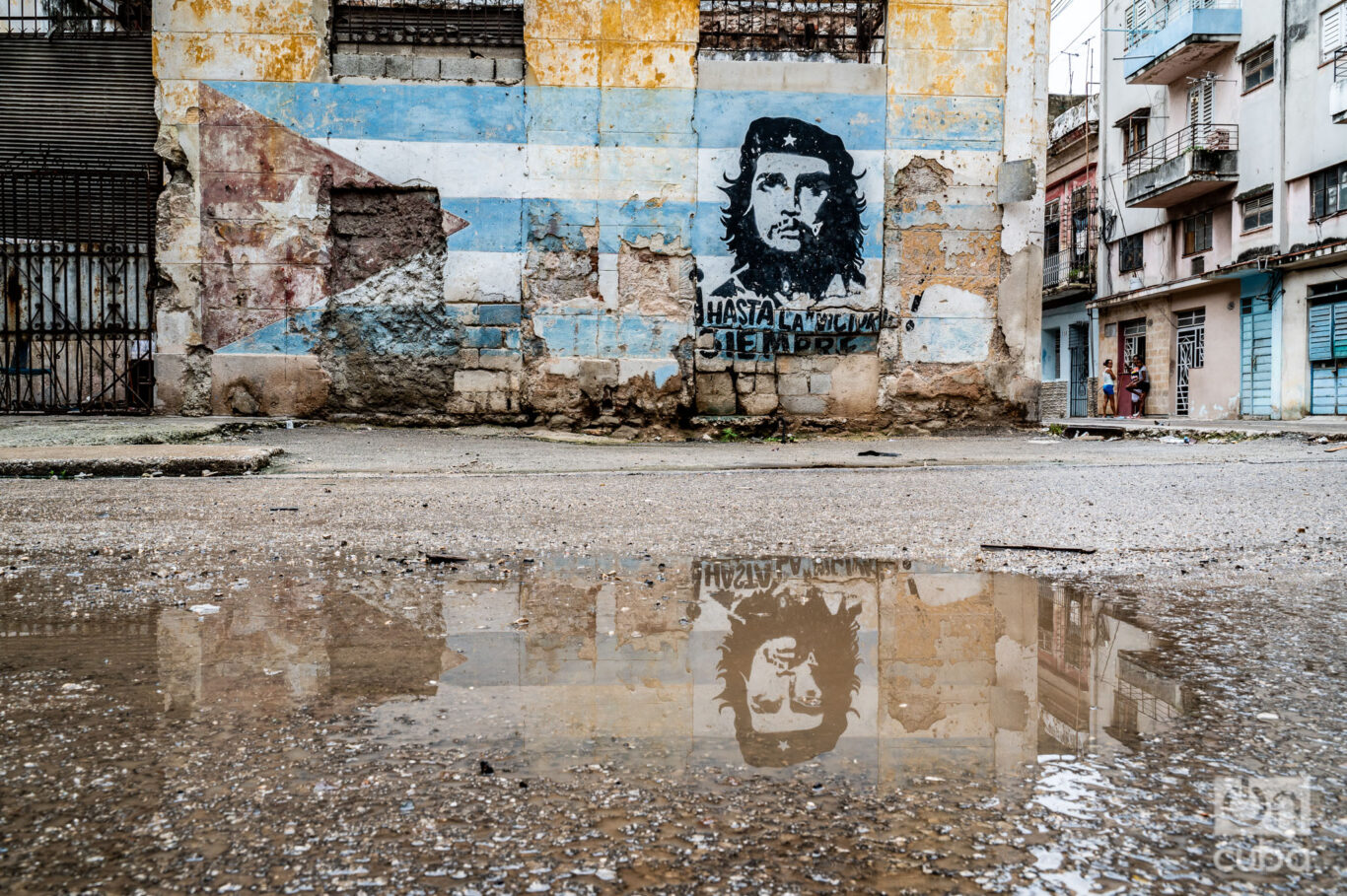
The puddles are liquid memory of the city, due to the water and the ephemeral. They are images that remain only until the sun evaporates them. Meanwhile, they make us look down and confront an inverted version of the surroundings, a distorted portrait of the city on a still, opaque surface.
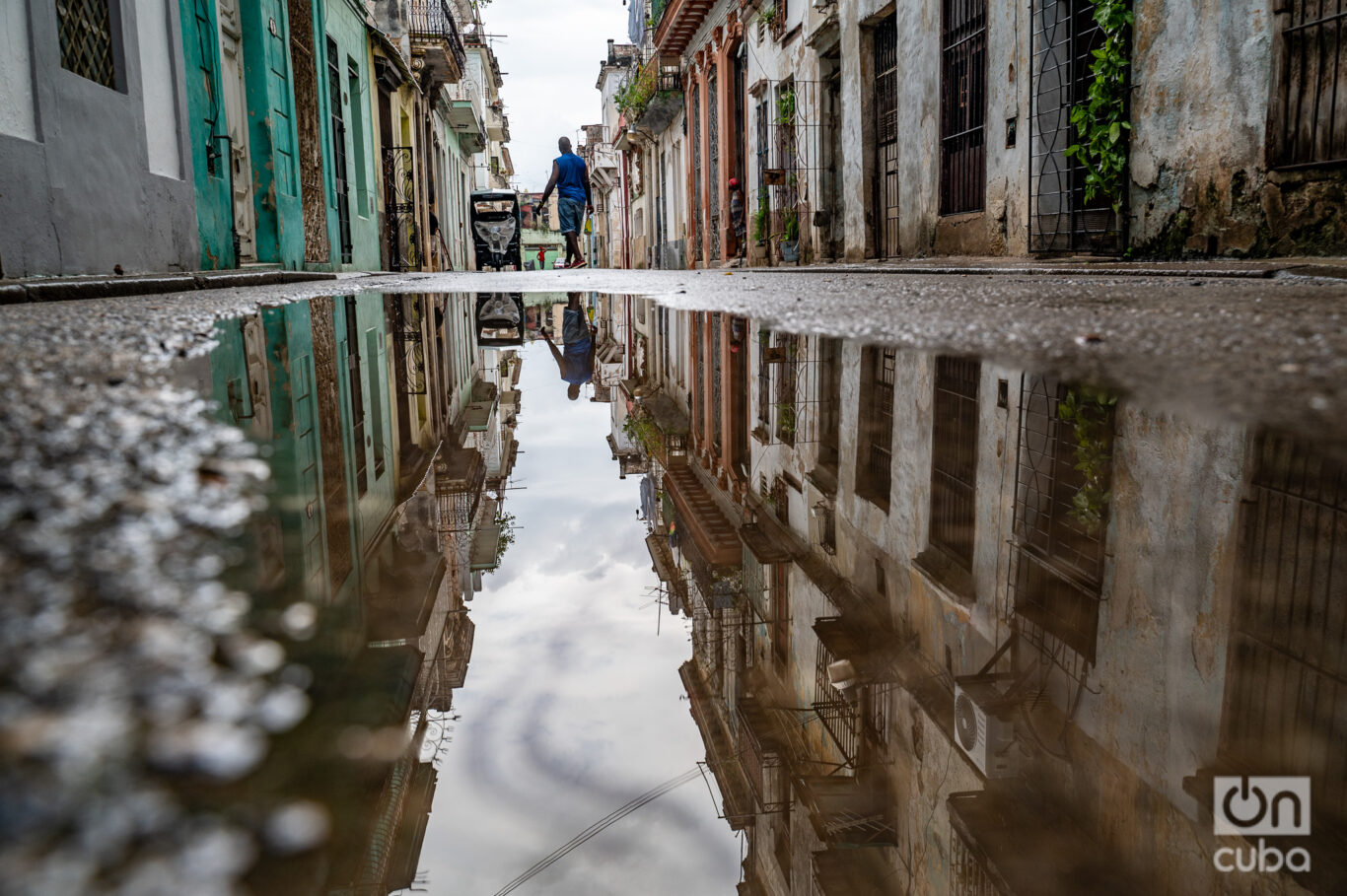
Before the heat returns the holes to their original state, I portray the reflections. I extend their lifespan in a frozen image. While we see these snapshots, the image outside of here no longer exists.
The rain is temporary, but the city’s wounds are not. Visions like these are just around the corner, with the next downpour. And the one that comes after.
